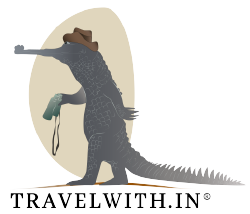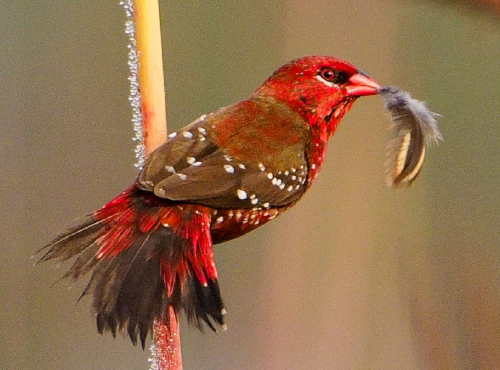Most travelers visiting Agra go to the Taj Mahal and head back not knowing that there is so much more to do in and around this city than just that. On your next trip to Agra, consider going on a river safari on the Chambal River with Kunal Jain. This experience is an hour drive from the City of the Taj. The meeting point for this tour is a major landmark in Agra. From Agra, Kunal will accompany you as your naturalist and we will drive to the river safari point. You should have transportation arranged or he can book a taxi for you to take you here. The entire experience takes about 5-6 hours including the drive time to the river from Agra.
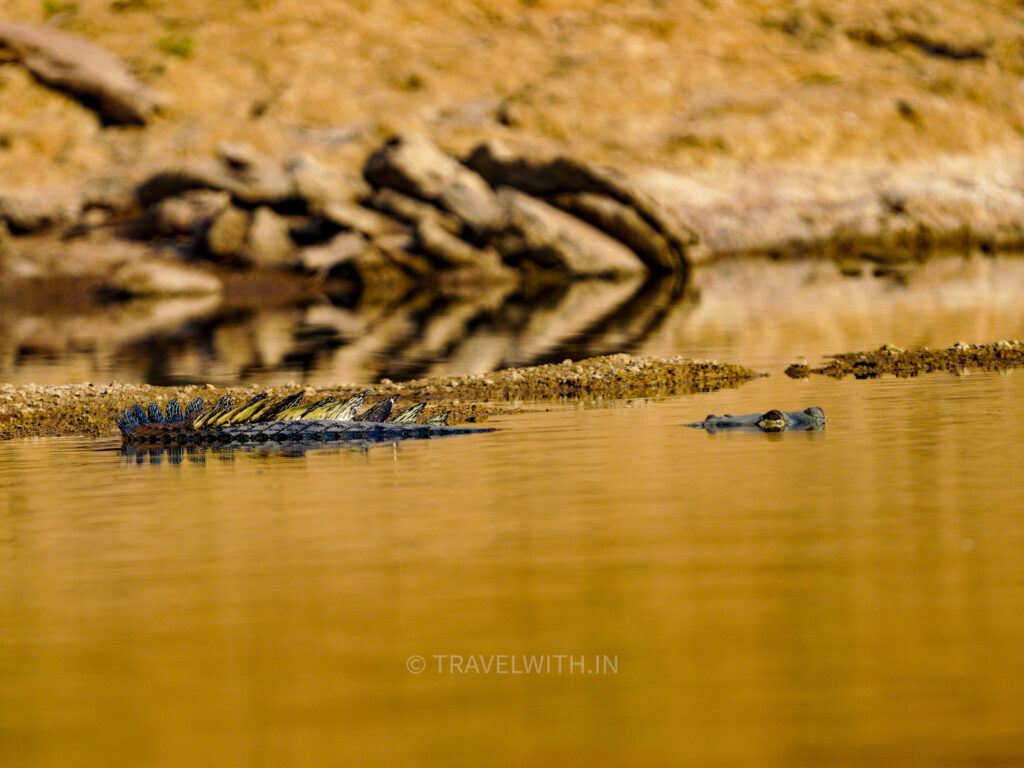
Golden hour shot of a female Gharial
Apart from the river safari, Kunal also takes his guests to un-touristy attractions in and around Agra. Click here if you would like to know more about the attractions he covers. These include ancient temples and ruins, lesser known monuments, havelis lost in the deep impenetrable ravines of the Chambal and Yamuna and birdwatching in lesser known wetlands around Agra.
The National Chambal Sanctuary (400+ KM of protected waters) falls inside the Chambal river which flows through the states of Madhya Pradesh, Rajasthan and Uttar Pradesh before it merges in to the Yamuna. It was declared a wildlife sanctuary in 1978. Today, it is one of the last remaining strongholds of the critically endangered gharial, red-crowned roofed turtle and the Gangetic river dolphin.
Gangetic River Dolphin Sighting on the Chambal river
Chambal River Safari – 2
The Chambal River Safari with Kunal as your naturalist is not your average safari. Kunal takes you on a rare and once in a lifetime safari on one of India’s most ‘alive’ river eco-systems. During the safari you get to see critically endangered Gharials, Indian Marsh crocodiles, eight species of turtles including the critically endangered Red-crowned Roofed turtle and several resident and migratory birds including the Indian Skimmer and Black-belled Tern. Mammals (although not frequent) spotted during the river safari include the Striped Hyena, Jackal, Jungle Cat, Desert Fox and the Gangetic River Dolphin.
Historically the Chambal river is mentioned in Hindu mythology and often as the ‘cursed’ river. For instance, the Chambal is mentioned in the Mahabharat from the in-famous scene when Draupadi was disrobed by the Kaurava brothers after having been lost by her husbands over a game of dice. While she was being disrobed she cursed the Chambal’s inhabitants that they would always live a life of revenge for not coming to her rescue.
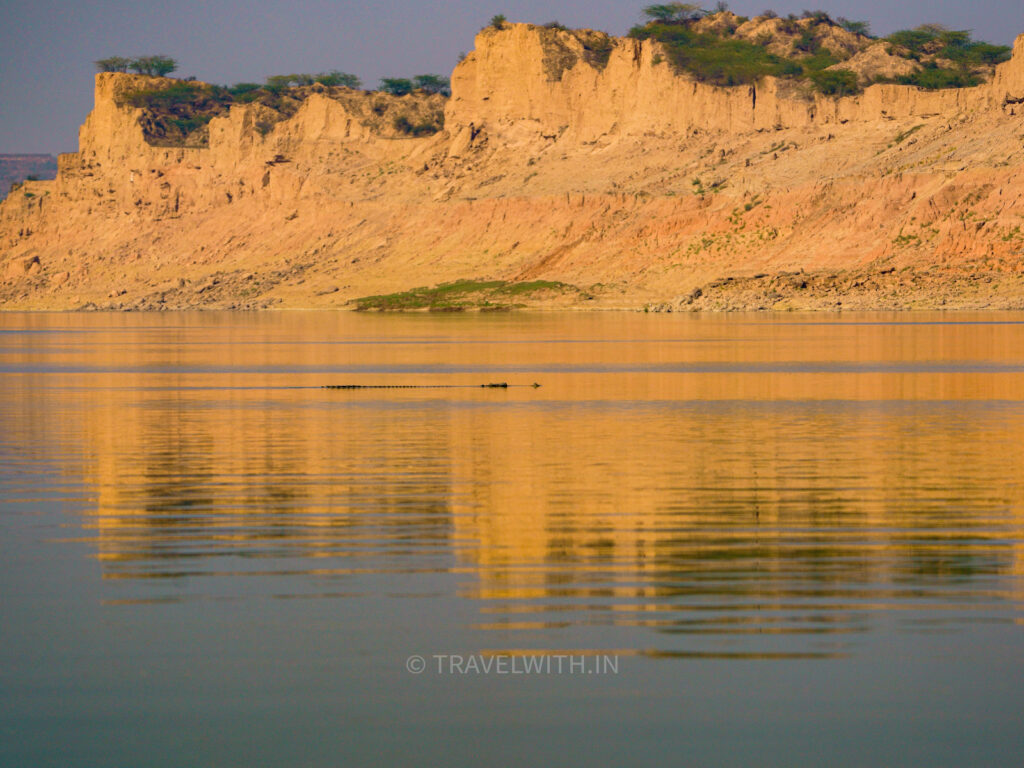
Chambal River and a male Gharial at sunset
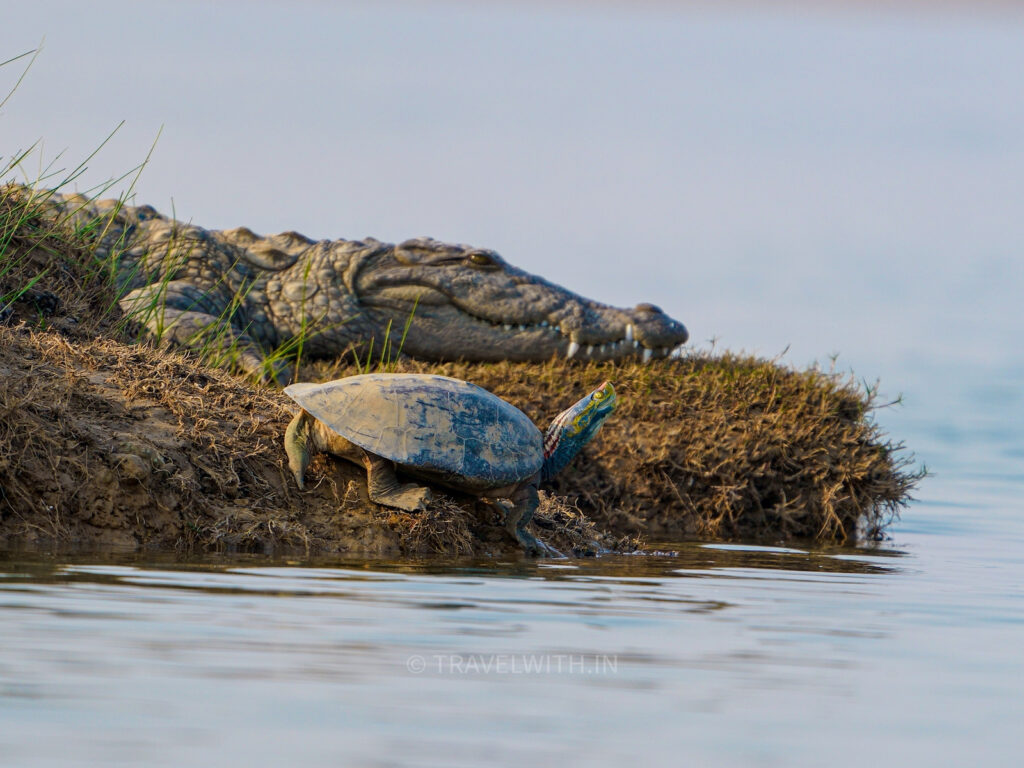
Red-crowned Roofed Turtle (male) and a Marsh Crocodile
Another story from Mahabharat mentions a King called Rantideva who was advised that in order to please the gods and bring prosperity to his kingdom, he must sacrifice a thousand cattle. So he did and the blood from the slaughtered cattle is what apparently formed the Chambal river. As the river was tainted with the blood and hide of cattle for years to come it became known as – Chamravati or the river of hides.
In the 19th century, the river and it’s surrounding ravines became famous for freedom fighters many of whom fought against the British Raj, especially during the First war of Independence in 1857 (also known as the Mutiny). Later on, the Chambal valley became infamous across the country for it’s notorious gangs of bandits – many of whom robbed the rich and gave to the poor. In those days many villagers (both men and women) became baaghis (bandits or dacoits) as they suffered in-justice due to the rampant disparities in the social structure and biased law and order system.
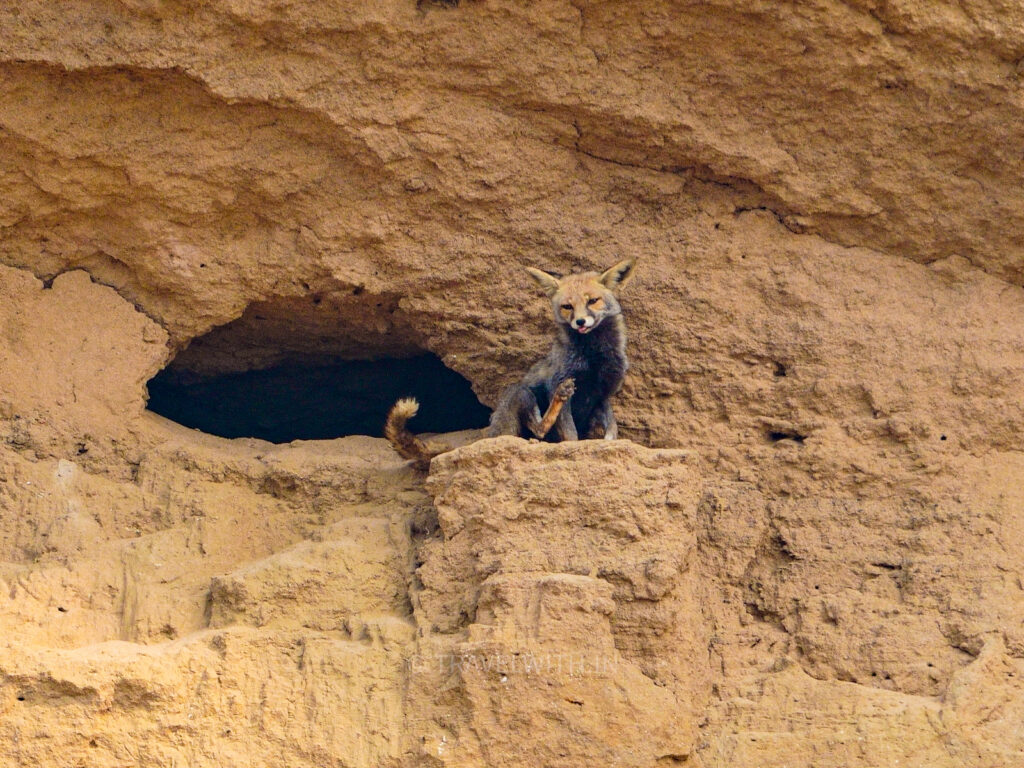
Desert Fox
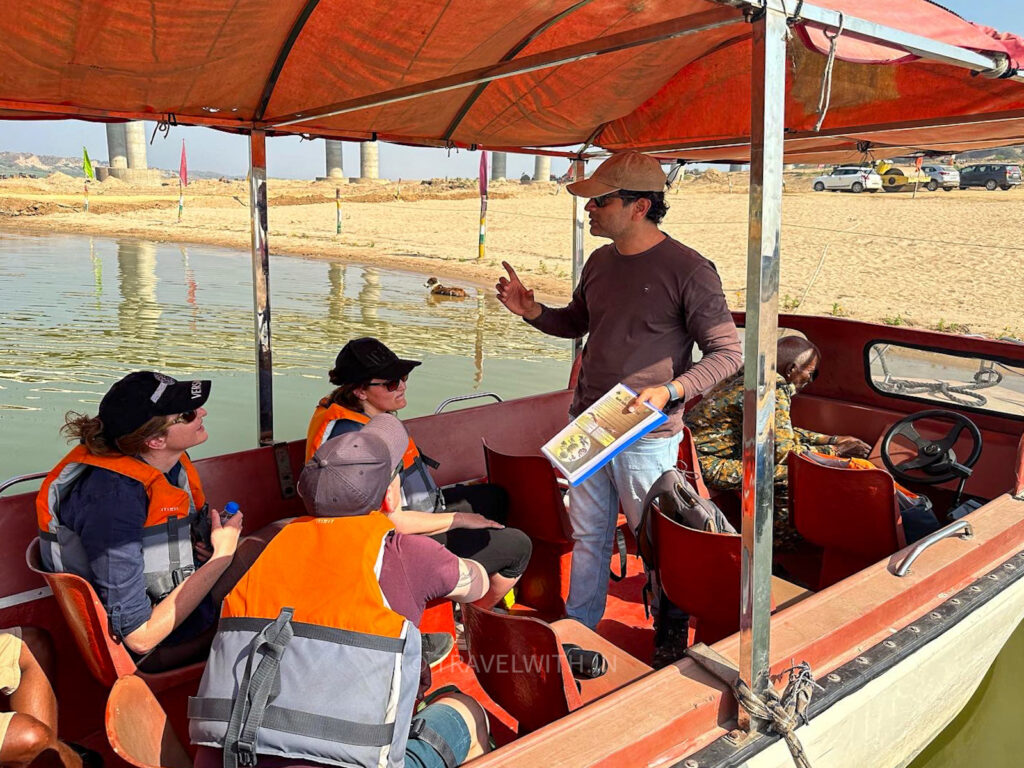
Chambal River Safari with your naturalist – Kunal Jain
Thanks to the in-hospitable terrain, cursed by gods, the bandits and ‘blood-thirty’ crocodiles, the Chambal river remained largely un-polluted and no major cities or industries other than Kota (Rajasthan) were established along it’s banks for many years. Today, there are four damns up-stream on the Chambal which have caused a devastating affect on the survival of many species such as the Gharial, Gangetic river dolphin, some turtle species, Indian Skimmer and the Black-bellied Tern.
If you want to do the Chambal River Safari on your next visit to Agra, please get in touch with us. We will accompany you as your naturalist and will give you an informative tour of the region’s history as well as the wildlife. We will meet you at a mutually agreed landmark in Agra and together drive to the river bank. There is no public transportation to the river so you need to organize your own transportation. We can also organize a taxi from one of our locally known transportation vendors.
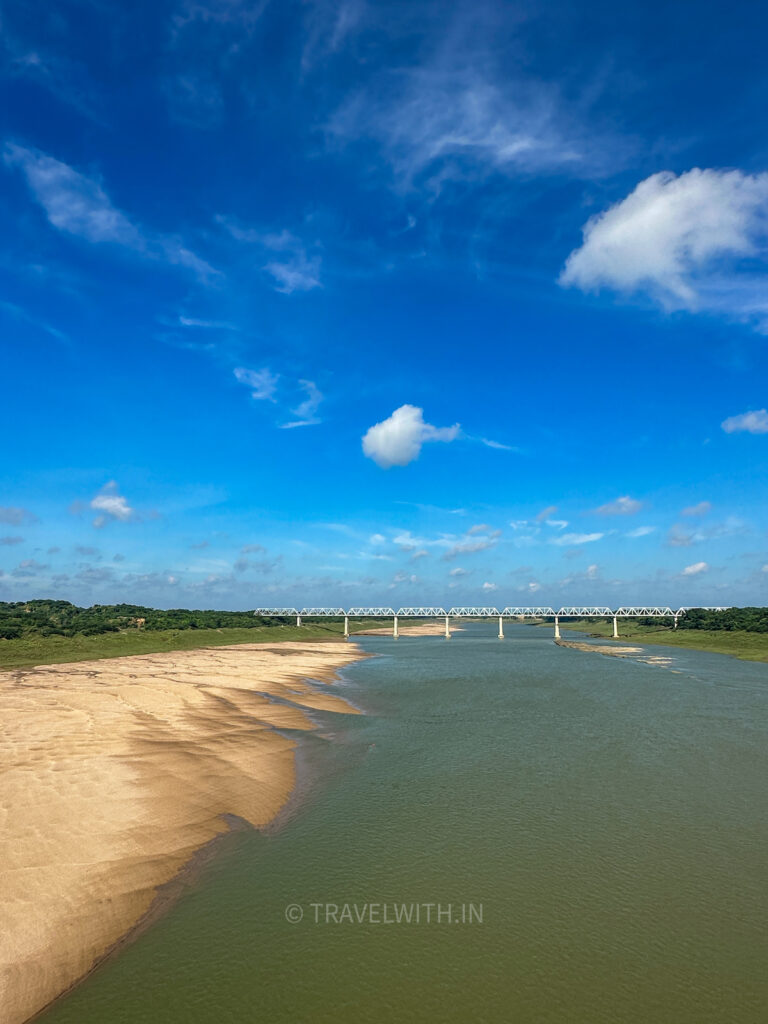
The cursed river, the Chambal River
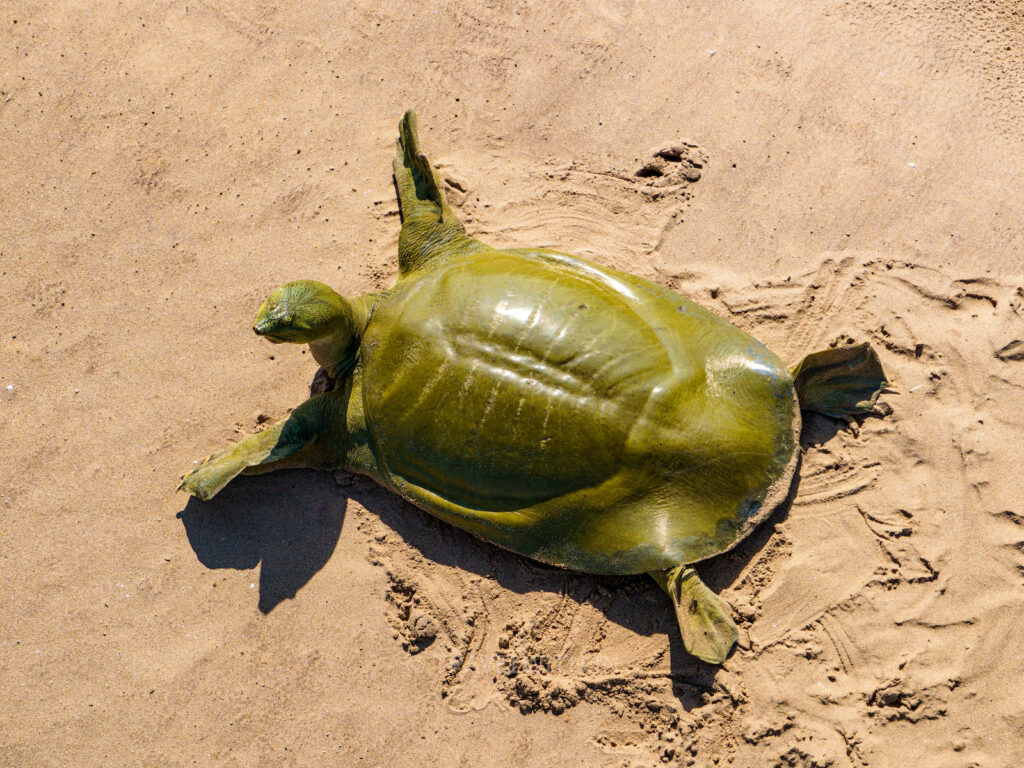
A massive Indian Softshell Turtle
The river safari is ideally done in the winter months (October/November to mid-April) but can also be done till June for those who don’t mind the heat. While some of the boats have canopies that provide much needed shade, it is still hot (in the 40s) so please consider this before booking a safari in the months of April, May and June. From April onwards many winter migrants such as Pochards, Bar-headed geese, Ruddy shelducks etc. fly back to Europe and Central Asia. However, as the water level reduces in the river, sightings of resident species both on land and in water becomes really good. It is also in the summer months that mammals from the ravines come to the river for a drink, if you’re lucky you may get to see striped hyena and a resident pair of desert foxes sometimes even with pups.
From July to September, the Sanctuary is closed for safaris due to the monsoons. The river safari with Kunal as your naturalist is conducted on two different sides both within an hour driving distance from Agra. As such, Agra should be your base where you can stay in one of several hotels or home-stays fitting your budget. This way you can do not just the safari with us but also visit the Taj Mahal and other monuments or go for shopping in Agra.
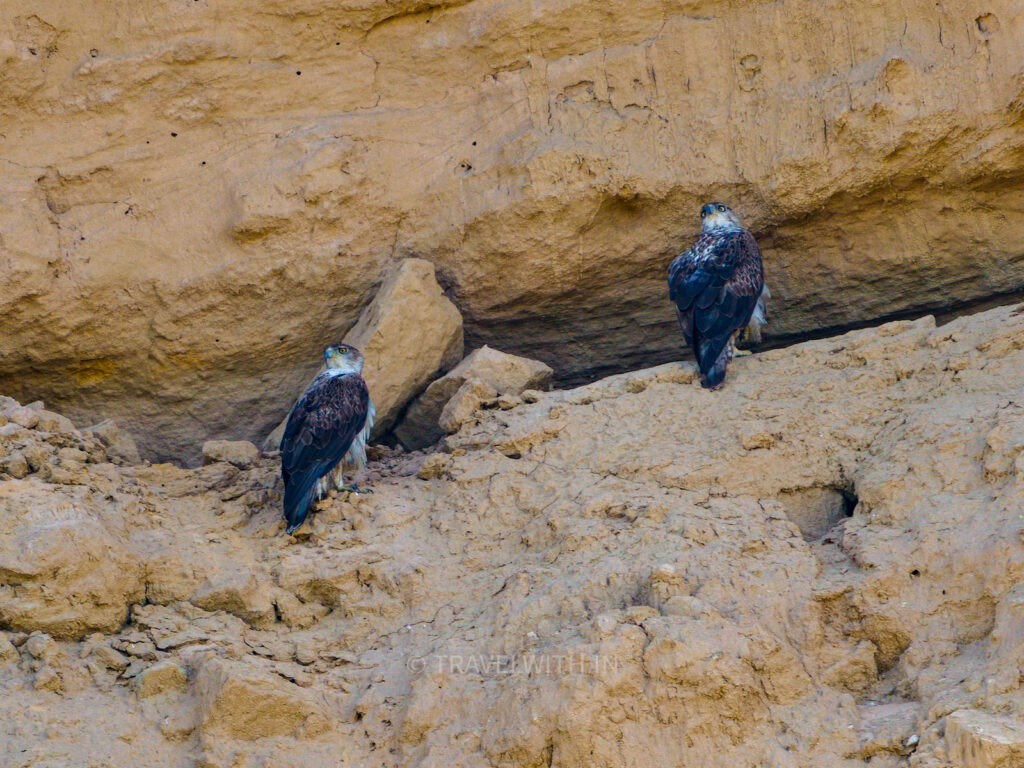
A pair of Bonelli’s Eagle
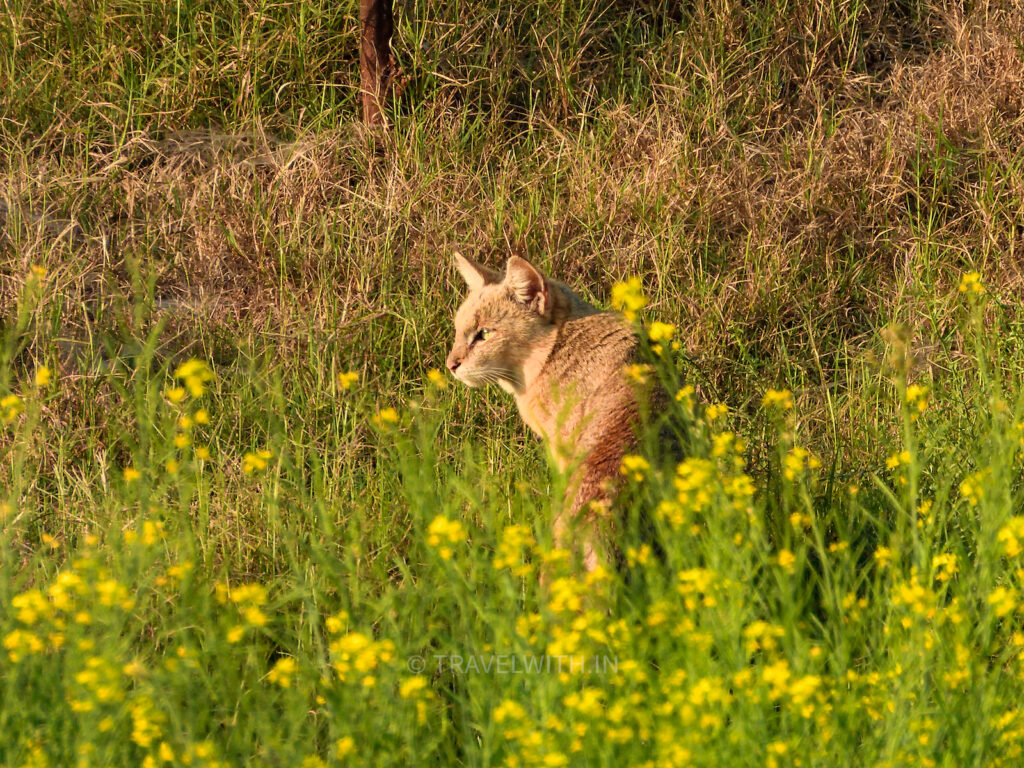
Jungle Cat
The two points on the Chambal where Kunal can take you on the river safari are Dholpur (Rajasthan) which demarcates the boundaries of two states – Rajasthan and Madhya Pradesh. The second point where we go on the river safari is in Uttar Pradesh where again the river demarcates the boundaries between the states of Madhya Pradesh and Uttar Pradesh. The Chambal merges in to the Yamuna river at Bhareh after flowing downstream for another some 100 KM from where we do the safari.
In the winter months we recommend that you plan to spend a night in Agra rather than planning a day trip as there is fog on the highway and also on the river. When there is fog on the river our visibility will be close to zero and we won’t spot the wildlife. In the peak of winter the highway to both the river points can get dangerous to drive on at dark. There are several stray cattle that sleep on the roads or cross without any warning and with poor visibility due to smog, accidents are frequent. Other things to keep in mind as you plan your visit to the Chambal river is that there are bare minimum tourist facilities in these remote areas. Toilets are a hole dug up in the sand with a plastic canvas as cover. There are no hygienic restaurants or cafes either, you have to bring your own food and water from Agra. We hope that what you see on the river will make you forget about all the pains it took you to get to the Chambal.
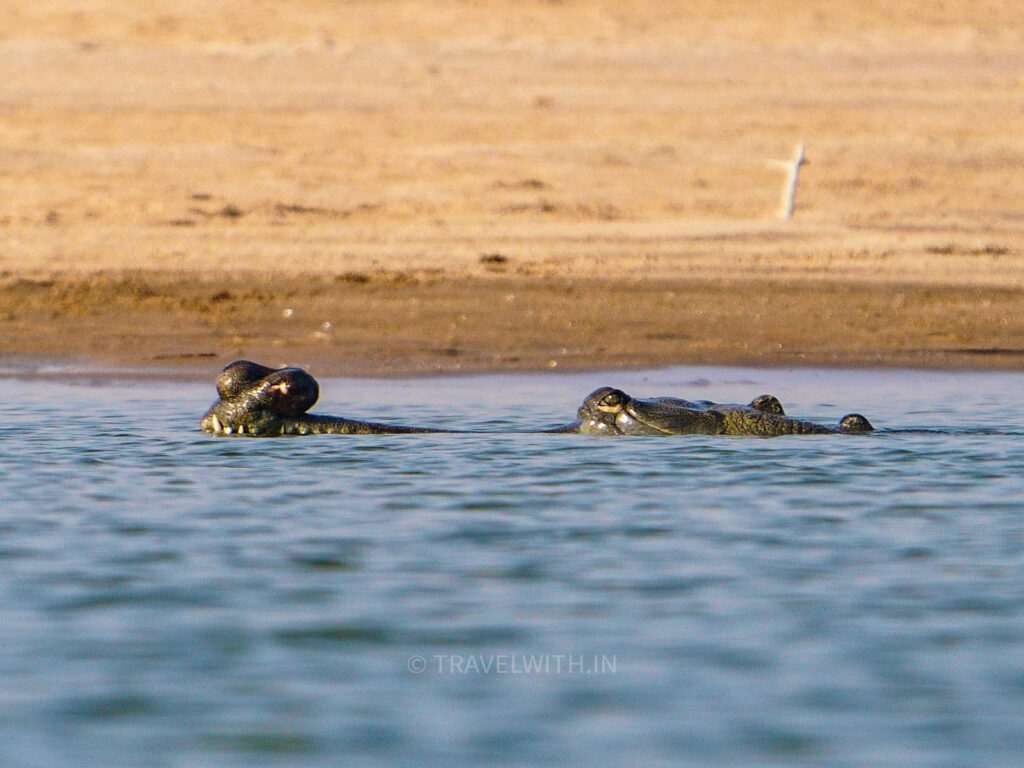
A male Gharial and his ghara
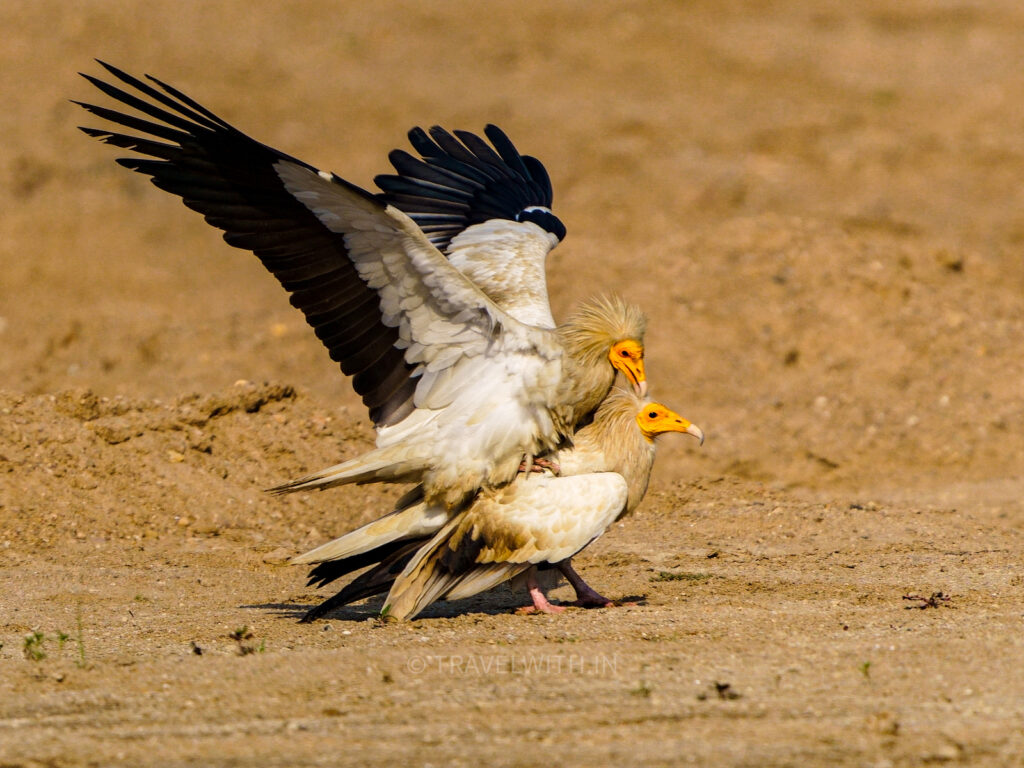
Pair of mating Egyptian Vultures
Please Note:
• There is no guarantee that you will see the above wildlife. The river is their habitat and sightings depend on water level in the river, human interference, climatic conditions, weather and other factors, most of which are beyond your and my control. We will do our best to show you all there is to see.
• How to get there: car is the fastest and most efficient.
• Price of river safari: depends on number of people, number of hours, which side of the river.
• Safety: All motor boats are monitored and checked to be in working condition. All safaris include a boatman and a naturalist. Guests have to wear life jackets at all times when on the boat.
• What to carry: photo identification, camera, binoculars, warm jacket in winter, small backpack, sun glasses, cap, sun block, cash for tips, food/snacks and drinking water.
• This experience is in the wild and rural India, please do not expect ‘luxury’ tourist facilities here. Sometimes, road conditions are bad or there are traffic jams, sometimes the boat engine gives up on us, therefore we would appreciate it if you can remain calm and patient when such un-planned circumstances pop up.
• Smoking and drinking alcohol is strictly not permitted on the boats and on the river bank.
• Most of the times there are no trash cans at the river safari points. Sometimes they’re there but waste is not disposed off properly. So, please take your trash (including empty plastic bottles) back with you to your cities.
• To prevent any disturbance to the wildlife, we discourage the use of call playback to attract birds, feeding or baiting of wildlife and always maintain a safe distance between them and our boat.
